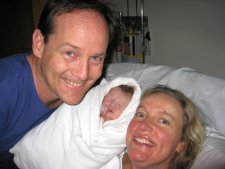Migraine Art: An Interview with Jim Chambliss (part 2)
Welcome to part 2 of our interview with Jim Chambliss. Mr. Chambliss is studying the connections between art, epilepsy and migraine. If you missed the background and part 1, read yesterday’s post, Migraine Art: An Interview with Jim Chambliss.
Why did you add migraine art to the study?
During the course of our study of the influence of epilepsy in art we discovered that many of our artists with epilepsy also have migraines. An unusually large number of our participants with epilepsy have family members with migraines. The symptoms often overlap and/or are remarkably similar. Many of the famous artists who are thought to have had epilepsy, like Vincent van Gogh, Lewis Carroll and Giorgio de Chirico, are thought to have had migraines by some and epilepsy by others.
In order to resolve this contentious issue it is important to look at how both conditions influence art. It could be that these artists had both migraines and epilepsy. Some forms of epilepsy and migraines have a great deal in common that we can better understand through how these conditions are shared in visual depiction and in how they influence the creative process.
How you think migraine disease or epilepsy impact creativity?
Some types of epilepsy and migraines can trigger visual illusions and hallucinations. This novelty leads to some very novel thought which is one of the core elements of creativity. In addition there can, on occasion, be a hyper-stimulation and hyper-synthesis of creative thought that our study will help to explain.
What do you hope to accomplish with this study?
I hope to bring about a better understanding of the people behind the art.
What has surprised you the most so far in your research?
There is something that has a great influence in the development of a certain type of art that has been most intriguing and profound. However, I will have to wait on answering that question until the collection of information is complete and the results are fully assessed.
Do you still need people for the study? How can they be involved?
We still need artists, by hobby or by trade, who have any type of migraines and epilepsy to participate in this study. We also ask for their family members to participate as a group for comparison, regardless of whether they are artistic. To learn more about this study please see www.sparksofcreativity.blogspot.com or contact me by email.
What can you tell us about yourself that might surprise us?
When I arrived in Australia, people would often call me “cheeky.” I had no idea what that meant. I was relieved to learn that it describes someone who is funny and likes to joke around. Now, my nieces in the USA call me “Cheeky Uncle Jim.”
Anything else you’d like us to know?
 |
My wife, Nicola, and I just had wonderful baby boy named Zachary Adam Chambliss (ZAC) on the 14th of October. I met my wife within three weeks after arriving in Melbourne Australia for my Ph.D. studies in creative arts and medicine. I was confronted with problems with the stigma of brain injury and epilepsy after the injuries. It was awkward in dating, particularly when I could not drive. I literally could see the change on a woman’s facial expression when I would first tell her that I have epilepsy and a brain injury.
Nicola is trained in injury management. When I told her that I had epilepsy she didn’t bat and eye. She admires what I have accomplished in overcoming these challenges and in my life as a whole. We fell in love quickly and completely. This wonderful blessing of finding my soul-mate and having a baby makes my life much more complete and enjoyable.
Again, to see some migraine and epilepsy art, to learn more about the epilepsy and migraine art study, and about Jim Chambliss, visit the Sparks of Creativity blog.
Thanks, Jim, for the interview! We look forward to hearing the results of the study.

